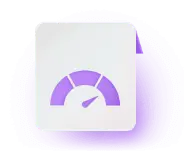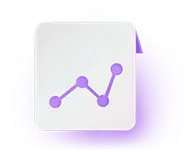CBSE 2025 Sample Papers for Class 11: One of the best methods to score excellent marks in Class 11 final exam is to solve as...

CBSE Sample Papers for Class 11 2025: Download Subject-wise PDFs
February 18, 2025
The Goa Board of Secondary and Higher Secondary Education is the principal state board of education in the Indian state of Goa, and is in charge of secondary and higher secondary education at its affiliated institutions. The “Goa, Daman and Diu Secondary and Higher Secondary Education Board Act, 1975” established the board on May 27, 1975.
The Goa Board of Secondary and Higher Secondary Education- GBSHSE conducts the Class 11 exam in February/March every year. This annual examination aims to test students on skills that help them build concept understanding, confidence and knowledge, aesthetic awareness, and integrity learnt during their school year.
All necessary details about the Goa class 11 examination conducted by the GBSHSE are tabulated below. The table gives an idea about the exam, the exam conducting frequency, the various options of languages available, and the important dates. Students are advised to go through the table below for further details:
| Particulars | Details |
|---|---|
| Name of the Board | Goa Board of Secondary & Higher Secondary Education (GBSHSE) |
| Class | 11th Class |
| Exam Date | March 02, 2023 |
| Availability of Admit Card | February, 2023 |
| Result Announcement Date | Yet to be Announced |
| Official Website | gbshse.info |

It is necessary for students to go through the Goa Board Class 11 exam pattern before appearing for the exams. Given below is the detailed exam pattern that students can refer to and start their exam preparation accordingly. Continue reading to find Goa Board Class 11 exam pattern.
Non Practical Subjects
The detailed marks details for non-practical subjects are given below:
| Theory | Total Theory |
Internal | Total Internal Marks |
Total | |||||
|---|---|---|---|---|---|---|---|---|---|
| First Quarterly Test |
First Term |
Second Quarterly Test |
Second Term |
Assignment | Project | Year-round Assessment |
|||
| 20 | 40 | 20 | 40 | 120 | 10 | 10 | 20 | 40 | 160 (To be converted out of 100) |
Practical Subjects
The detailed marks details for practical subjects are given below:
| Theory | Total Theory |
Internal | Total Internal Marks |
Total | ||||||
|---|---|---|---|---|---|---|---|---|---|---|
| First Quarterly Test |
First Term |
Second Quarterly Test |
Second Term |
First Term Practical |
Project | Year-round Assessment |
Second Term Practical |
|||
| 20 | 40 | 20 | 40 | 120 | 10 | 10 | 10 | 10 | 40 | 160 (To be converted out of 100) |
Marking Scheme
The detailed marking scheme is given below:
| Serial Number | Form of Questions | Number of Questions | Marks |
|---|---|---|---|
| 1 | MCQ | 02 | 1 x 2 = 02 |
| 2 | VSA | 02 | 1 x 2 = 02 |
| 3 | SA-I | 05 | 5 x 2 = 10 |
| 4 | SA – II | 02 | 2 x 3 = 06 |
Below are some of the points regarding the details of quarterly exams and question paper patterns:

Before starting with the exam preparation, it is essential for students to get familiar with the syllabus. Knowing the syllabus as it will help students in having a structured and planned exam preparation. In this article, students can find the updated syllabus for Goa Board Class 11. Continue reading to know more. Goa Board Class 11 Mathematics Syllabus Given below is the syllabus for Goa Board Class 11 Mathematics:
| Chapter Number | Chapter Name |
|---|---|
| Unit 1: Sets and Functions | |
| 1 | Sets: Sets and their representations, Empty set, Finite and Infinite sets, Equal sets, Subsets. Subsets of a set of real numbers, especially intervals (with notations). Power set. Universal set. Venn diagrams. Union and Intersection of sets. Difference of sets. Complement of a set. Properties of Complement. |
| 2 | Relations & Functions: Ordered pairs. Cartesian product of sets. Number of elements in the Cartesian product of two finite sets. Cartesian product of the set of reals with itself (upto R x R x R). Definition of relation, pictorial diagrams, domain, co-domain and range of a relation. Function as a special type of relation. Pictorial representation of a function, domain, co-domain and range of a function. Real valued functions, domain and range of these functions, constant, identity, polynomial, rational, modulus, signum, exponential, logarithmic and greatest integer functions, with their graphs. Sum, difference, product and quotients of functions. |
| 3 | Trigonometric Functions: Positive and negative angles. Measuring angles in radians and in degrees and conversion from one measure to another. Definition of trigonometric functions with the help of unit circle. Truth of the identity sin2x + cos2x = 1, for all x. Signs of trigonometric functions. Domain and range of trigonometric functions and their graphs. Expressing sin (x±y) and cos (x±y) in terms of sinx, siny, cosx & cosy and their simple applications. Deducing identities like the following: Identities related to sin2x, cos2x, tan2 x, sin3x, cos3x and tan3x. General solution of trigonometric equations of the type sin y = sin a, cos y = cos a and tan y = tan a. |
| Unit 2: Algebra | |
| 1 | Principle of Mathematical Induction: Process of the proof by induction, motivating the application of the method by looking at natural numbers as the least inductive subset of real numbers. The principle of mathematical induction and simple applications. |
| 2 | Complex Numbers and Quadratic Equations: Need for complex numbers, especially √−1, to be motivated by inability to solve some of the quadratic equations. Algebraic properties of complex numbers. Argand plane and polar representation of complex numbers.Statement of Fundamental Theorem of Algebra, solution of quadratic equations (with real coefficients) in the complex number system. Square root of a complex number. |
| 3 | Linear Inequalities: Linear inequalities. Algebraic solutions of linear inequalities in one variable and their representation on the number line. Graphical solution of linear inequalities in two variables. Graphical method of finding a solution of a system of linear inequalities in two variables. |
| 4 | Permutations and Combinations: Fundamental principle of counting. Factorial n. (n!) Permutations and combinations, derivation of Formulae for npr and ncr and their connections, simple applications. |
| 5 | Binomial Theorem: Historical perspective, statement and proof of the binomial theorem for positive integral indices. Pascal’s triangle, General and middle term in binomial expansion, simple applications. |
| 6 | Sequence and Series: Sequence and Series. Arithmetic Progression (A. P.). Arithmetic Mean (A.M.) Geometric Progression (G.P.), general term of a G.P., sum of n terms of a G.P., infinite G.P. and its sum, geometric mean (G.M.), relation between A.M. and G.M. Formulae for the following special sums |
| Unit 3: Coordinate Geometry | |
| 1 | Straight Lines: Brief recall of two dimensional geometry from earlier classes. Shifting of origin. Slope of a line and angle between two lines. Various forms of equations of a line: parallel to axis, point -slope form, slope-intercept form, two-point form, intercept form and normal form. General equation of a line. Equation of family of lines passing through the point of intersection of two lines. Distance of a point from a line. |
| 2 | Conic Sections: Sections of a cone: circles, ellipse, parabola, hyperbola, a point, a straight line and a pair of intersecting lines as a degenerate case of a conic section. Standard equations and simple properties of parabola, ellipse and hyperbola. Standard equation of a circle. |
| 3 | Introduction to Three-dimensional Geometry: Coordinate axes and coordinate planes in three dimensions. Coordinates of a point. Distance between two points and section formula. |
| Unit 4: Calculus | |
| 1 | Limits and Derivatives: Derivative introduced as rate of change both as that of distance function and geometrically. Intuitive idea of limit. Limits of polynomials and rational functions trigonometric, exponential and logarithmic functions. Definition of derivative relates it to scope of tangent of the curve, derivative of sum, difference, product and quotient of functions. Derivatives of polynomial and trigonometric functions. |
| Unit 5: Mathematical Reasoning | |
| 1 | Mathematical Reasoning: Mathematically acceptable statements. Connecting words/ phrases – consolidating the understanding of “if and only if (necessary and sufficient) condition”, “implies”, “and/or”, “implied by”, “and”, “or”, “there exists” and their use through variety of examples related to real life and Mathematics. Validating the statements involving the connecting words, difference among contradiction, converse and contrapositive |
| Unit 6: Statistics and Probability | |
| 1 | Statistics: Measures of Dispersion: Range, Mean deviation, variance and standard deviation of ungrouped/grouped data. Analysis of frequency distributions with equal means but different variances. |
| 2 | Probability: Random experiments; outcomes, sample spaces (set representation). Events; occurrence of events, ‘not’, ‘and’ and ‘or’ events, exhaustive events, mutually exclusive events, Axiomatic (set theoretic) probability, connections with other theories of earlier classes. Probability of an event, probability of ‘not’, ‘and’ and ‘or’ events. |
Given below is the syllabus for Goa Board Class 11 Physics:
| Chapter Number | Chapter Name | Topics |
|---|---|---|
| 1 | Physical World | Physics-scope and excitement; nature of physical laws; Physics, technology and society. |
| 2 | Units and Measurements | Need for measurement: Units of measurement; systems of units; SI units, fundamental and derived units. Length, mass and time measurements; accuracy and precision of measuring instruments; errors in measurement; significant figures. Dimensions of physical quantities, dimensional analysis and its applications |
| 3 | Motion in a Straight Line | Elementary concepts of differentiation and integration for describing motion, uniform and non- uniform motion, average speed and instantaneous velocity, uniformly accelerated motion, velocity – time and position-time graphs. Relations for uniformly accelerated motion (graphical treatment). |
| 4 | Motion in a Plane | Scalar and vector quantities; position and displacement vectors, general vectors and their notations; equality of vectors, multiplication of vectors by a real number; addition and subtraction of vectors, relative velocity, Unit vector; resolution of a vector in a plane, rectangular components, Scalar and Vector product of vectors. Motion in a plane, cases of uniform velocity and uniform acceleration-projectile motion, uniform circular motion. |
| 5 | Laws of Motion | Intuitive concept of force, Inertia, Newton’s first law of motion; momentum and Newton’s second law of motion; impulse; Newton’s third law of motion. (recapitulation only) Law of conservation of linear momentum and its applications. Equilibrium of concurrent forces, Static and kinetic friction, laws of friction, rolling friction, lubrication. Dynamics of uniform circular motion: Centripetal force, examples of circular motion (vehicle on a level circular road, vehicle on a banked road). |
| 6 | Work, Energy and Power | Work done by a constant force and a variable force; kinetic energy, work-energy theorem, power. Notion of potential energy, potential energy of a spring, conservative forces: conservation of mechanical energy (kinetic and potential energies); non-conservative forces: motion in a vertical circle; elastic and inelastic collisions in one and two dimensions. |
| 7 | System of Particles and Rotational Motion | Centre of mass of a two-particle system, momentum conservation and centre of mass motion. Centre of mass of a rigid body; centre of mass of a uniform rod. Moment of a force, torque, angular momentum, law of conservation of angular momentum and its applications. Equilibrium of rigid bodies, rigid body rotation and equations of rotational motion, comparison of linear and rotational motions. Moment of inertia, radius of gyration, values of moments of inertia for simple geometrical objects (no derivation). |
| 8 | Gravitation | Universal law of gravitation. Acceleration due to gravity (recapitulation only) and its variation with altitude and depth. Gravitational potential energy and gravitational potential, escape velocity, orbital velocity of a satellite, Geo-stationary satellites. |
| 9 | Mechanical Properties of Solids | Stress-strain relationship, Hooke’s law, Young’s modulus, bulk modulus |
| 10 | Mechanical Properties of Fluids | Pressure due to a fluid column; Pascal’s law and its applications (hydraulic lift and hydraulic brakes), effect of gravity on fluid pressure. Viscosity, Stokes’ law, terminal velocity, streamline and turbulent flow, critical velocity, Bernoulli’s theorem and its applications. Surface energy and surface tension, angle of contact, excess of pressure across a curved surface, application of surface tension ideas to drops, bubbles and capillary rise. |
| 11 | Thermal Properties of Matter | Heat, temperature,( recapitulation only) thermal expansion; thermal expansion of solids, liquids and gases, anomalous expansion of water; specific heat capacity; Cp, Cv – calorimetry; change of state – latent heat capacity. Heat transfer-conduction, convection and radiation (recapitulation only), thermal conductivity, qualitative ideas of Blackbody radiation, Wein’s displacement Law, Stefan’s law, Greenhouse effect. |
| 12 | Thermodynamics | Thermal equilibrium and definition of temperature (zeroth law of thermodynamics), heat, work and internal energy. First law of thermodynamics, isothermal and adiabatic processes. Second law of thermodynamics: reversible and irreversible processes. |
| 13 | Kinetic Theory | Equation of state of a perfect gas, work done in compressing a gas. Kinetic theory of gases – assumptions, concept of pressure. Kinetic interpretation of temperature; rms speed of gas molecules; degrees ofdom, law of equi-partition of energy (statement only) and application to specific heat capacities of gases; concept of mean path, Avogadro’s number. |
| 14 | Oscillations | Periodic motion – time period, frequency, displacement as a function of time, periodic functions. Simple harmonic motion (S.H.M) and its equation; phase; oscillations of a loaded spring restoring force and force constant; energy in S.H.M. Kinetic and potential energies; simple pendulum derivation of expression for its time period., forced and damped oscillations (qualitative ideas only), resonance. |
| 15 | Waves | Wave motion: Transverse and longitudinal waves, speed of travelling wave, displacement relation for a progressive wave, principle of superposition of waves, reflection of waves, standing waves in strings and organ pipes. |
Given below is the syllabus for Goa Board Class 11 Chemistry:
| Chapter Number | Chapter Name | Topics |
|---|---|---|
| 1 | Some Basic Concepts of Chemistry | General Introduction: Importance and scope of Chemistry. Nature of matter, laws of chemical combination, Dalton’s atomic theory: concept of elements, atoms and molecules. Atomic and molecular masses, mole concept and molar mass, percentage composition, empirical and molecular formula, chemical reactions, stoichiometry and calculations based on stoichiometry. |
| 2 | Structure of Atom | Discovery of Electron, Proton and Neutron, atomic number, isotopes and isobars. Thomson’s model and its limitations. Rutherford’s model and its limitations, Bohr’s model and its limitations, concept of shells and subshells, dual nature of matter and light, de Broglie’s relationship, Heisenberg uncertainty principle, concept of orbitals, quantum numbers, shapes of s, p and d orbitals, rules for filling electrons in orbitals – Aufbau principle, Pauli’s exclusion principle and Hund’s rule, electronic configuration of atoms, stability of half-filled and completely filled orbitals. |
| 3 | Classification of Elements and Periodicity of Properties | Significance of classification, brief history of the development of periodic table, modern periodic law and the present form of periodic table, periodic trends in properties of elements -atomic radii, ionic radii, inert gas radii, Ionization enthalpy, electron gain enthalpy, electronegativity, valency. Nomenclature of elements with atomic number greater than 100. |
| 4 | Chemical Bonding and Molecular Structure | Valence electrons, ionic bond, covalent bond, bond parameters, Lewis structure, polar character of covalent bond, covalent character of ionic bond, valence bond theory, resonance, geometry of covalent molecules, VSEPR theory, concept of hybridization, involving s, p and d orbitals and shapes of some simple molecules, molecular orbital theory of homonuclear diatomic molecules (qualitative idea only), Hydrogen bond. |
| 5 | States of Matter | Three states of matter, intermolecular interactions, types of bonding, melting and boiling points, role of gas laws in elucidating the concept of the molecule, Boyle’s law, Charles law, Gay Lussac’s law, Avogadro’s law, ideal behaviour, empirical derivation of gas equation, Avogadro’s number, ideal gas equation. Deviation from ideal behaviour, liquefaction of gases, critical temperature, kinetic energy and molecular speeds (elementary idea), Liquid State- vapour pressure, viscosity and surface tension (qualitative idea only, no mathematical derivations) |
| 6 | Thermodynamics | Concepts of System and types of systems, surroundings, work, heat, energy, extensive and intensive properties, state functions. First law of thermodynamics -internal energy and enthalpy, heat capacity and specific heat, measurement of U and H, Hess’s law of constant heat summation, enthalpy of bond dissociation, combustion, formation, atomization, sublimation, phase transition, ionization, solution and dilution. Second law of Thermodynamics (brief introduction) Introduction of entropy as a state function, Gibb’s energy change for spontaneous and nonspontaneous processes, criteria for equilibrium. Third law of thermodynamics (brief introduction). |
| 7 | Equilibrium | Equilibrium in physical and chemical processes, dynamic nature of equilibrium, law of mass action, equilibrium constant, factors affecting equilibrium – Le Chatelier’s principle, ionic equilibrium- ionization of acids and bases, strong and weak electrolytes, degree of ionization, ionization of poly basic acids, acid strength, concept of pH, hydrolysis of salts (elementary idea), buffer solution, Henderson Equation, solubility product, common ion effect (with illustrative examples). |
| 8 | Redox Reactions | Concept of oxidation and reduction, redox reactions, oxidation number, balancing redox reactions, in terms of loss and gain of electrons and change in oxidation number, applications of redox reactions. |
| 9 | Hydrogen | Position of hydrogen in periodic table, occurrence, isotopes, preparation, properties and uses of hydrogen, hydrides-ionic covalent and interstitial; physical and chemical properties of water, heavy water, hydrogen peroxide -preparation, reactions and structure and use; hydrogen as a fuel |
| 10 | s-Block Elements | Group 1 and Group 2 Elements General introduction, electronic configuration, occurrence, anomalous properties of the first element of each group, diagonal relationship, trends in the variation of properties (such as ionization enthalpy, atomic and ionic radii), trends in chemical reactivity with oxygen, water, hydrogen and halogens, uses. Preparation and Properties of Some Important Compounds: Sodium Carbonate, Sodium Chloride, Sodium Hydroxide and Sodium Hydrogen carbonate, Biological importance of Sodium and Potassium. Calcium Oxide and Calcium Carbonate and their industrial uses, biological importance of Magnesium and Calcium. |
| 11 | p-Block Elements | General Introduction to p -Block Elements Group 13 Elements: General introduction, electronic configuration, occurrence, variation of properties, oxidation states, trends in chemical reactivity, anomalous properties of first element of the group, Boron – physical and chemical properties, some important compounds: Borax, Boric acid, Boron Hydrides, Aluminium: Reactions with acids and alkalis, uses. Group 14 Elements: General introduction, electronic configuration, occurrence, variation of properties, oxidation states, trends in chemical reactivity, anomalous behaviour of first elements. Carbon-catenation, allotropic forms, physical and chemical properties; uses of some important compounds: oxides. Important compounds of Silicon and a few uses: Silicon Tetrachloride, Silicones, Silicates and Zeolites, their uses. |
| 12 | Organic Chemistry-Some Basic Principles & Techniques | General introduction, methods of purification, qualitative and quantitative analysis, classification and IUPAC nomenclature of organic compounds. Electronic displacements in a covalent bond: inductive effect, electromeric effect, resonance and hyperconjugation. Homolytic and heterolytic fission of a covalent bond: radicals, carbocations, carbanions, electrophiles and nucleophiles, types of organic reactions. |
| 13 | Hydrocarbons(Classification, Alkanes and Alkenes) | Classification of Hydrocarbons Aliphatic Hydrocarbons: Alkanes – Nomenclature, isomerism, conformation (ethane only), physical properties, chemical reactions including radical mechanism of halogenation, combustion and pyrolysis. Alkenes – Nomenclature, structure of double bond (ethene), geometrical isomerism, physical properties, methods of preparation, chemical reactions: addition of hydrogen, halogen, water, hydrogen halides (Markovnikov’s addition and peroxide effect), ozonolysis, oxidation, mechanism of electrophilic addition. |
| 14 | Hydrocarbons(Alkynes,Aromatic and Toxicity & Carcinogenicity) | Alkynes – Nomenclature, structure of triple bond (ethyne), physical properties, methods of preparation, chemical reactions: acidic character of alkynes, addition reaction of – hydrogen, halogens, hydrogen halides and water. Aromatic Hydrocarbons: Introduction, IUPAC nomenclature, benzene: resonance, aromaticity, chemical properties: mechanism of electrophilic substitution. Nitration, sulphonation, halogenation, Friedel Crafts alkylation and acylation, directive influence of functional group in monosubstituted benzene. Carcinogenicity and toxicity |
Given below is the syllabus for Goa Board Class 11 Biology:
| Unit | Chapter Number | Unit Names and Chapter Names |
|---|---|---|
| 1 | Diversity of Living Organisms | |
| 1 | The Living World What is living? Biodiversity; Need for classification; taxonomy and systematics; concept of species and taxonomic hierarchy; binomial nomenclature; tools for study of taxonomy museums, zoological parks, herbaria, botanical gardens, keys for identification. |
|
| 2 | Biological Classification Five kingdom classification; Salient features and classification of Monera, Protista and Fungi into major groups; Lichens, Viruses and Viroids. |
|
| 3 | Plant Kingdom Salient features and classification of plants into major groups – Algae, Bryophyta, Pteridophyta, Gymnosperms and Angiosperms (salient and distinguishing features and a few examples of each category): Angiosperms – classification up to class, characteristic features and examples. Plant life cycles and alternation of generations |
|
| 4 | Animal Kingdom Basis of Classification; Salient features and classification of animals, non-chordates up to phyla level and chordates up to class level (salient features and distinguishing features of a few examples of each category). (No live animals or specimens should be displayed in school). |
|
| 2 | Structural Organisation in Plants and Animals | |
| 5 | Morphology of Flowering Plants Morphology and modifications: Morphology of different parts of flowering plants: root, stem, leaf, inflorescence, flower, fruit and seed. Description of families: Fabaceae, Solanaceae and Liliaceae (to be dealt along with the relevant experiments of the Practical Syllabus). |
|
| 6 | Structural Organisation in Animals Animal tissues; Morphology, Anatomy and functions of different systems (digestive, circulatory, respiratory, nervous and reproductive) of an insect-cockroach (a brief account only). |
|
| 3 | Structure and Functions | |
| 7 | Cell: The Unit of Life Cell theory and cell as the basic unit of life, structure of prokaryotic and eukaryotic cells; Plant cell and animal cell; cell envelope; cell membrane, cell wall; cell organelles – structure and function; endomembrane system- endoplasmic reticulum, ribosomes, golgi bodies, lysosomes, vacuoles; mitochondria, plastids, microbodies; cytoskeleton, cilia, flagella, centrioles (ultrastructure and function); nucleus. |
|
| 8 | Biomolecules Chemical constituents of living cells: biomolecules, structure and function of proteins, carbohydrates, lipids, nucleic acids; concept of metabolism; Enzymes – properties, enzyme action, factors, classification, Co-factors |
|
| 9 | Cell Cycle and Cell Division Cell cycle, mitosis, meiosis and their significance |
|
| 4 | Plant Physiology | |
| 10 | Photosynthesis in Higher Plants Photosynthesis as a means of autotrophic nutrition; early experiments, site of photosynthesis, pigments involved in photosynthesis (elementary idea); photochemical and biosynthetic phases of photosynthesis; cyclic and non-cyclic photophosphorylation; chemiosmotic hypothesis; photorespiration; C3 and C4 pathways; factors affecting photosynthesis |
|
| 11 | Respiration in Plants Exchange of gases; do plants breathe; cellular respiration – glycolysis, fermentation (anaerobic), TCA cycle and electron transport system (aerobic); energy relations – number of ATP molecules generated; amphibolic pathways; respiratory quotient. |
|
| 12 | Plant – Growth and Development Seed germination; characteristics, measurements and phases of plant growth, growth rate; conditions for growth; differentiation, dedifferentiation and redifferentiation; sequence of developmental processes in a plant cell; growth regulators – auxin, gibberellin, cytokinin, ethylene, ABA; seed dormancy; vernalisation; photoperiodism. |
|
| 5 | Human Physiology | |
| 13 | Breathing and Exchange of Gases Introduction to respiratory organs in animals; Respiratory system in humans; mechanism of breathing and its regulation in humans – exchange of gases, transport of gases and regulation of respiration, respiratory volumes; disorders related to respiration – asthma, emphysema, occupational respiratory disorders |
|
| 14 | Body Fluids and Circulation Composition of blood, blood groups, coagulation of blood; composition of lymph and its function; circulatory pathways; human circulatory system – Structure of human heart and blood vessels; cardiac cycle, cardiac output, ECG; double circulation; regulation of cardiac activity; disorders of circulatory system – hypertension, coronary artery disease, angina pectoris, heart failure. |
|
| 15 | Excretory Products and Their Elimination Modes of excretion – ammonotelism, ureotelism, uricotelism; human excretory system – structure and function; urine formation, osmoregulation; regulation of kidney function – renin – angiotensin, atrial natriuretic factor, ADH, diabetes insipidus; micturition; role of other organs in excretion; disorders – uremia, renal failure, renal calculi, nephritis; dialysis and artificial kidney, kidney transplant. |
|
| 16 | Locomotion and Movement Types of movement – amoeboid, ciliary, flagellar, muscular; types of muscles; skeletal muscle, contractile proteins and muscle contraction; skeletal system and its functions; joints; disorders of muscular and skeletal systems – myasthenia gravis, tetany, muscular dystrophy, arthritis, osteoporosis, gout. |
|
| 17 | Neural Control and Coordination Neuron and nerves; Nervous system in humans – central nervous system and peripheral nervous system; generation, conduction and transmission of nerve impulse; reflex action; sensory perception; sense organs; elementary structure and functions of eye and ear. |
|
| 18 | Chemical Coordination and Integration Endocrine glands and hormones; human endocrine system – hypothalamus, pituitary, pineal, thyroid, parathyroid, thymus, adrenal, pancreas, gonads; hormones of heart, kidney and gastrointestinal tract; mechanism of hormone action (elementary idea); role of hormones as messengers and regulators, hypo – and hyperactivity and related disorders; dwarfism, acromegaly, cretinism, goiter, exophthalmic goiter, diabetes, Addison’s disease |
|
Given below is the syllabus for Goa Board Class 11 English:
| Section | Competencies |
|---|---|
| Reading Comprehension | Conceptual understanding, decoding, Analyzing, inferring, interpreting, appreciating, literary, conventions and vocabulary, summarizing and using appropriate format/s |
| Creative Writing Skills and Grammar | Conceptual Understanding, application of rules, Analysis, Reasoning, appropriacy of style and tone, using appropriate format and fluency, inference, analysis, evaluation and creativity |
| Literature Textbooks and Supplementary Reading Text | Recalling, reasoning, appreciating literary convention, inference, analysis, creativity with fluency |
| Assessment of Listening and Speaking Skills |

Given below is the Goa Board Class 11 exam blueprint. Students can refer to this to understand the marks distribution, course structure and other important details regarding Goa Board Class 11 exams.
Refer to the revised topics and weightage of marks in the table below:
| Serial Number | Mid Term | First Term | Second Term | |||
|---|---|---|---|---|---|---|
| Chapter Names | Marks | Chapter Names | Marks | Chapter Names | Marks | |
| 1 | Sets | 05 | Sets | 07 | Mathematical Induction | 05 |
| 2 | Relations and Functions | 05 | Relations and Functions | 08 | Binomial Theorem | 12 |
| 3 | Trigonometric Functions | 10 | Trigonometric Functions | 15 | Straight Lines | 12 |
| – | – | – | Complex Numbers and Quadratic Equations | 10 | Conics | 12 |
| – | – | – | Permutations and Combinations | 12 | Introduction to Three Dimensional Geometry | 08 |
| – | – | – | Sequence and Series | 11 | Limits and Derivatives | 12 |
| – | – | – | Linear Inequalities | 07 | Statistics | 07 |
| Total | 20 | Total | 70 | Total | 80 | |
Refer to the table for mathematics course structure:
| Serial Number | Unit Names | Marks |
|---|---|---|
| 1 | Sets and Functions | 23 |
| 2 | Algebra | 30 |
| 3 | Coordinate Geometry | 10 |
| 4 | Calculus | 05 |
| 5 | Mathematical Reasoning | 02 |
| 6 | Statistics and Probability | 10 |
| Total | 80 | |
| Serial Number | Typology of Questions | Total Marks |
|---|---|---|
| 1 | Remembering: Exhibit memory of previously learned material by recalling facts, terms, basic concepts, and answers. Understanding: Demonstrate understanding of facts and ideas by organizing, comparing, translating, interpreting, giving descriptions, and stating main ideas | 44 |
| 2 | Applying: Solve problems to new situations by applying acquired knowledge, facts, techniques and rules in a different way. | 20 |
| 3 | Analysing : Examine and break information into parts by identifying motives or causes. Make inferences and find evidence to support generalizations. Evaluating: Present and defend opinions by making judgments about information, validity of ideas, or quality of work based on a set of criteria. Creating: Compile information together in a different way by combining elements in a new pattern or proposing alternative solutions. |
16 |
| Total | 80 | |
Given below is the exam blueprint of Goa Board Class 11 Chemistry:
| S. No. | Name of Units | Marks |
|---|---|---|
| 1. | Some Basic Concepts of Chemistry | 5 |
| 2. | Structure of Atom | 5 |
| 3. | Classification of Elements and Periodicity in Properties | 4 |
| 4. | Chemical Bonding | 6 |
| 5. | States of Matter: Gases and Liquids | 5 |
| 6. | Thermodynamics | 7 |
| 7. | Equilibrium | 8 |
| 8. | Redox Reactions | 3 |
| 9. | Hydrogen | 3 |
| 10. | S-Block Elements (Alkali and alkaline Earth Metals) | 5 |
| 11. | Some p-Block Elements | 6 |
| 12. | Organic Chemistry-Some Basic Principles and Techniques | 5 |
| 13. | Hydrocarbons | 6 |
| 14. | Environmental Chemistry | 2 |
| Total | 70 | |
Given below is the exam blueprint of Goa Board Class 11 Biology:
| S. No. | NAMES | MARKS |
|---|---|---|
| 1. | Diversity In Living Organisms | 10 |
| 2. | Structural Organisation In Animals and Plants | 10 |
| 3. | Cell Structure and Function | 14 |
| 4. | Plant Physiology | 18 |
| 5. | Animal Physiology | 18 |
| Total | 70 | |
Given below is the marks weightage and question details of Goa Board Class 11 Biology:
| Types of Questions | % Weightage | No. Of Questions | Marks Out of 70 |
|---|---|---|---|
| Objective Type | 13 | 9 ( 4 MCQ + 5 VVSA) | 9 |
| VSA- Very Short Answer | 20 | 7 | 14 |
| SA-Short Answer | 47 | 11 | 33 |
| LA- Long Answer | 20 | 3 | 14 ( 4+5+5) |
Given below is the exam blueprint of Goa Board Class 11 Physics:
| Units | Titles | Weightage |
|---|---|---|
| I | Physical World and Measurement | 04 |
| II | Kinematics | 09 |
| III | Laws of Motion | 10 |
| IV | Work, Energy, and Power | 06 |
| V | Motion of System of Particles and Rigid Body | 06 |
| VI | Gravitation | 05 |
| VII | Properties of Bulk Matter | 10 |
| VIII | Thermodynamics | 05 |
| IX | Behaviour of Perfect Gas and Kinetic Theory | 05 |
| X | Oscillations and Waves | 10 |
| Total | 70 | |

Given below is the important exam dates regarding the Goa Board Class 11 exams. Students can refer to the table below and start their exam preparation accordingly:
| Details | Dates |
|---|---|
| Goa Board Class 11 Exam Commencement | March 02, 2023 |
| Goa Board Class 11 Exam Ending | April 06, 2023 |

For a thorough exam preparation, it is essential for students to have a proper study plan in order to have maximum efficiency. Given below are some preparation tips and a detailed study plan for students to have a good study session. Continue reading to know more.
Students must prepare properly and efficiently to achieve excellent exam scores, and they must use some solid preparation ideas to do so. These guidelines should be followed by students to gain a better grasp of how to begin exam preparations and finish the syllabus on time. So, to assist better, we at Embibe have compiled some preparation recommendations, which are listed below:
Creating a schedule will assist in balancing studies with other daily activities. Simply put, this is one of the most crucial things one can do to manage time and plan the day effectively.

Refer to the following frequently asked questions on Goa Board Class 11:
Ans: The Goa Board Class 11 exams will be conducted from March 02, 2023.
Ans: Students can find the Goa Board Class 11 updated syllabus for 2023 on this page.
Ans: The official website of the Goa board is gbshse.info.
Ans: The notification for the Goa Board Class 11 result is released on the official website of the board. Students can check their results from their respective schools.
Ans: Students can find the Goa Board Class 11 exam pattern on this page.

Below is the school list affiliated to the Goa Board for Class 11:
| School/College Name | Location |
|---|---|
| FR. Agnel Central School | Pilar Goa |
| Green Meadows School | Bardez, Goa |
| Government Higher Secondary School | Mastimol, Canacona, Goa |
| Fr. Agnel Higher Secondary School | Pilar, Goa |
| Guardian Angel Higher Secondary School | Curchorem, Goa |
| Carmel Higher Secondary School | Nuvem, Salcete, Goa |
| DCT’s Vasantrao Dempo Higher Secondary School | Deendayal Integrated School Complex, Goa |
| D.M’s PVS Sarojini Madhusudan Khushe Higher Secondary School | Mapusa, Bardez, Goa |
| Litera Primary Zee School | Zuarinagar, Vasco, Goa |

After Class 11, students are promoted to Class 12, which is one of the most important turning points in a student’s life. Also, in Class 11, a student can attend the below mentioned competitive exams.
| NTSE | National Talent Search Examination |
|---|---|
| KVPY | Kishore Vaigyanic Protsahan Yojana |
| HBBVS | Dr. Homi Baba Balvaidnyanik Spardha |
| NSO | National Science Olympiad |
| UCO | Unified Cyber Olympiad |
| MTSE | Maths Talent Search Exam |
| IMO | International Mathematics Olympiad |